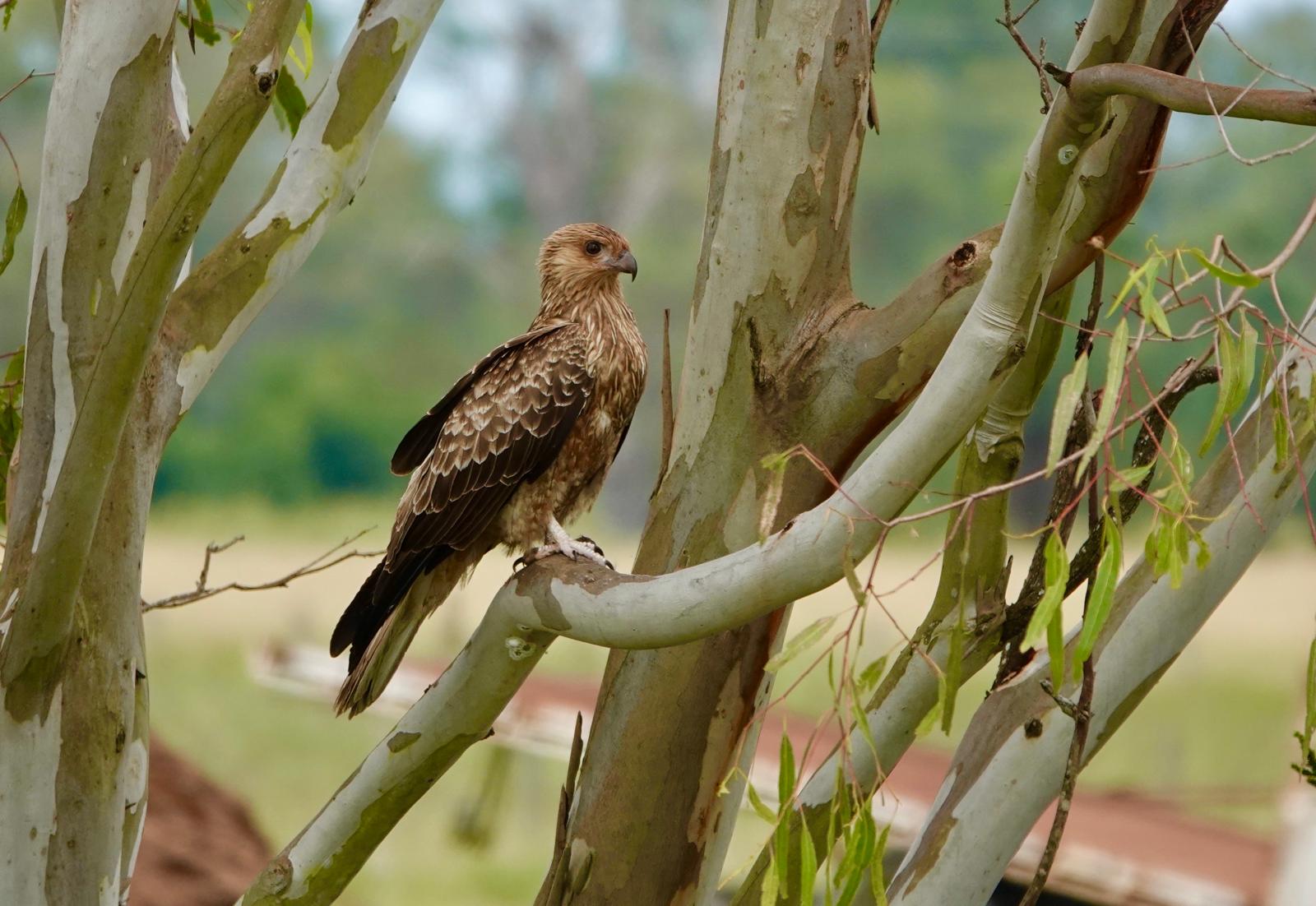Whistling Kite (Haliastur sphenurus)

If you’ve ever wandered near Australia’s wetlands, open woodlands, or coastal regions and heard a plaintive, whistling call echoing across the sky, chances are you’ve encountered the majestic Whistling Kite (Haliastur sphenurus). Known for its hauntingly beautiful voice and distinctive soaring flight, this medium-sized raptor is a familiar — and often welcome — sight across much of Australia and parts of New Guinea.
A Raptor with Character
The Whistling Kite, named for its unmistakable call, is not your average bird of prey. It stands out with its pale, streaked head and chestnut-brown plumage, often appearing golden in strong sunlight. With a wingspan reaching up to 1.5 metres, it glides gracefully over rivers, farmland, and estuaries, its wings slightly upturned in a shallow “V”, scanning the ground below.
What makes this raptor particularly striking is not just its appearance, but its versatility and intelligence. Unlike many other birds of prey, the Whistling Kite is both a hunter and a scavenger. It’s just as comfortable plucking fish from the water as it is feeding on carrion, often seen alongside roads cleaning up roadkill or circling over bushfires to pick off fleeing small animals. Opportunistic and resourceful, it plays an important ecological role as both predator and cleaner.
Vocal Virtuoso
Its call — a clear, whistling, descending trill — is what often draws attention first. This call serves multiple purposes: marking territory, attracting mates, and maintaining contact with family members. It’s a sound that has become synonymous with the Australian outback and inland waterways, often used in documentaries to evoke a sense of the wild and untamed.
Life and Habitat
Whistling Kites are highly adaptable and can be found across a variety of habitats, from coastal mangroves and wetlands to dry inland scrublands. They are especially common around water, where food is plentiful.
Breeding season usually occurs from late winter to early summer. Pairs build large stick nests high in trees, often reused and added to each year. Both parents share in raising the chicks, which fledge after about six to eight weeks. These birds are known for their strong pair bonds and family-oriented behaviour.
Conservation and Coexistence
Fortunately, the Whistling Kite is not considered threatened, and its population remains stable across most of its range. However, like many birds of prey, it faces challenges from habitat destruction, secondary poisoning from rodenticides, and human disturbances. Supporting efforts to preserve wetlands, reduce pesticide use, and maintain natural bushland helps ensure this remarkable bird continues to whistle over our landscapes for generations to come.
A Symbol of the Wild
For birdwatchers, the Whistling Kite is a thrilling species to observe — elegant in flight, bold in behaviour, and hauntingly beautiful in sound. Whether soaring lazily on a thermal or calling from the treetops, it reminds us of the interconnectedness of ecosystems and the subtle power of nature’s scavengers and sentinels.
So next time you hear that eerie whistle overhead, take a moment to look up. The Whistling Kite may be watching — a guardian of the skies, riding the wind with effortless grace.
We are affiliated with Amazon and make a small royalty at no extra cost to you, so by using the links below to purchase your next birding gear you can help us to maintain Simply Birding and continue to bring great content:

Canon, Sony and Nikon cameras: https://amzn.to/4gmtDWk

Lenses for bird photography: https://amzn.to/3WG3vyF

Tripods: https://amzn.to/3PVDNT0

Memory Cards: https://amzn.to/3PV4Y0z

Bird books: https://amzn.to/42NgsKS

Binoculars for bird watching: https://amzn.to/42G0nGZ

Spotting Scopes for bird watching: https://amzn.to/4hom5nq















